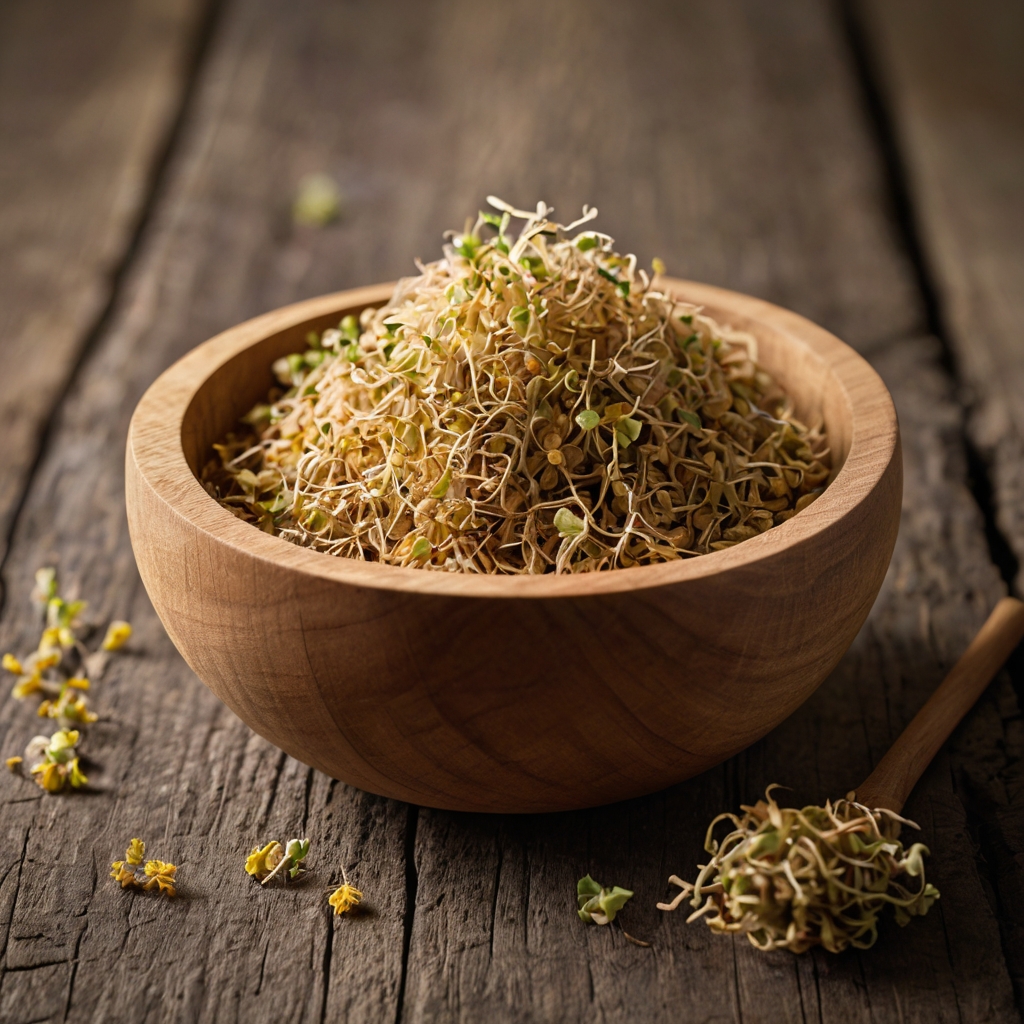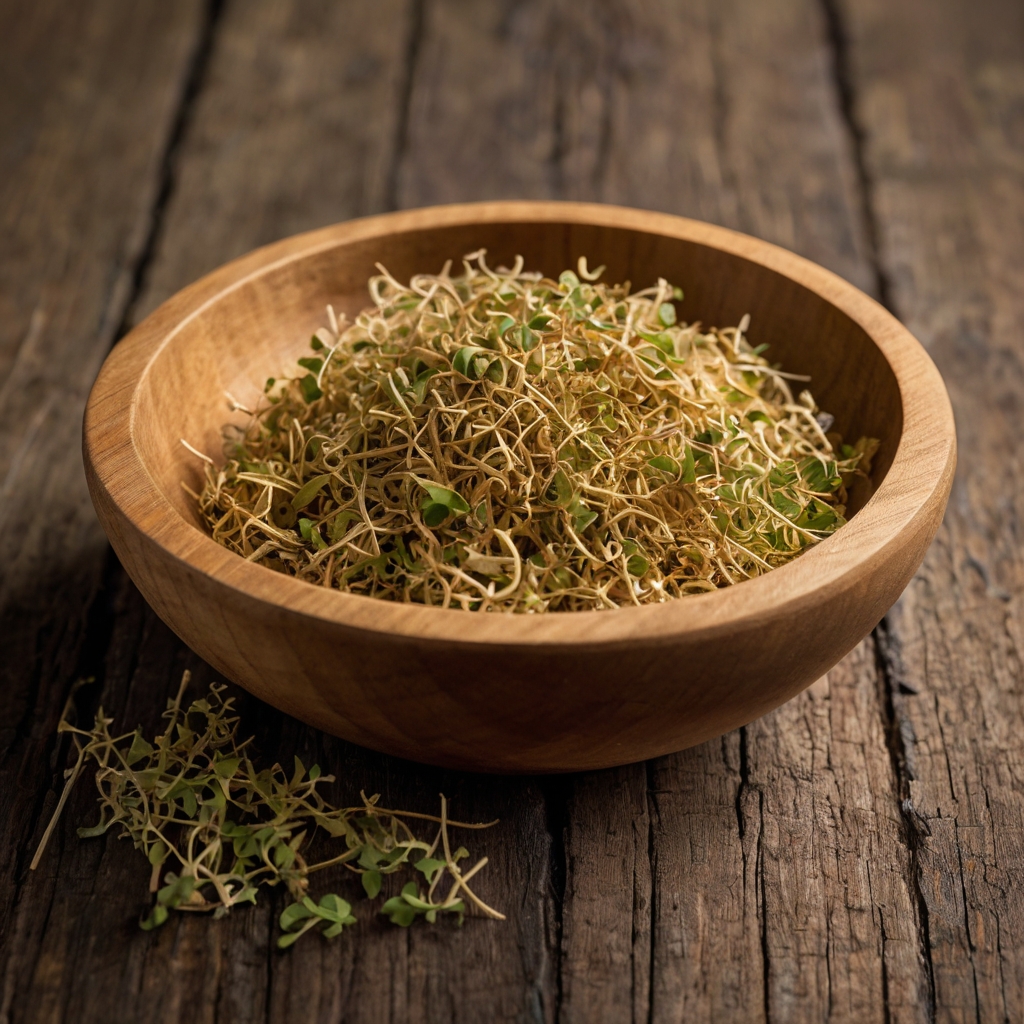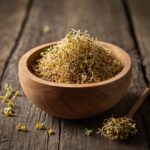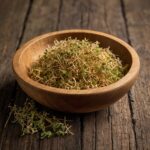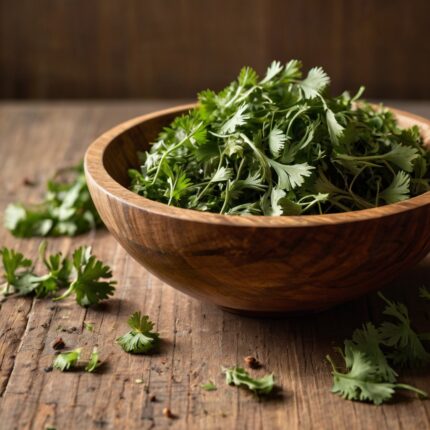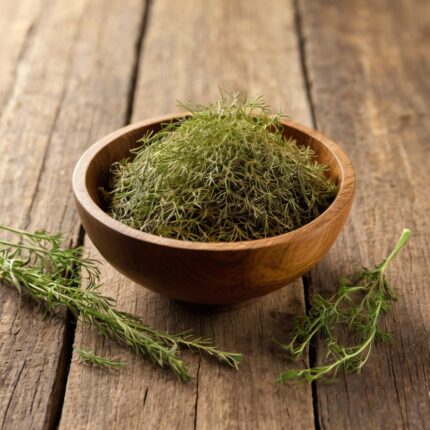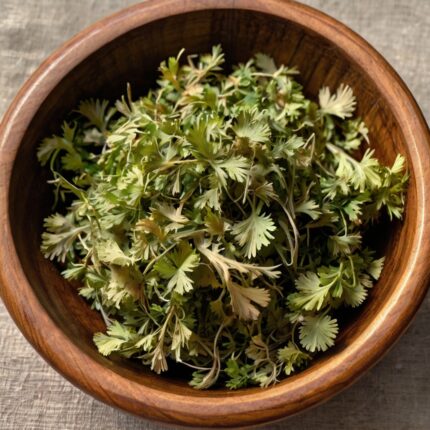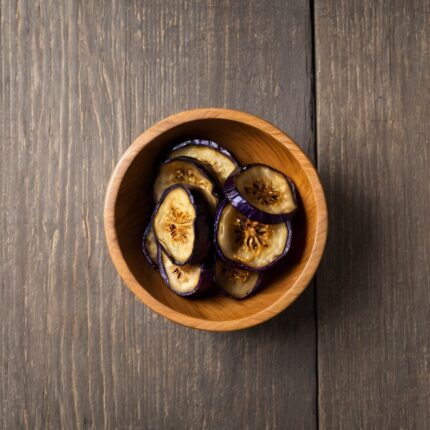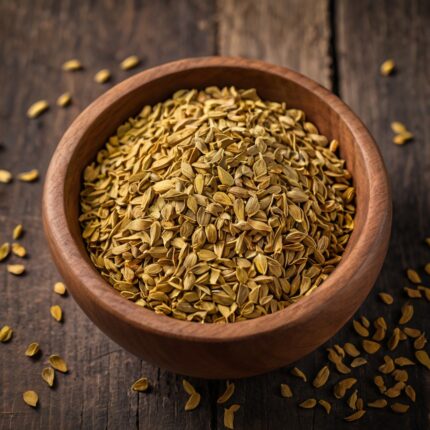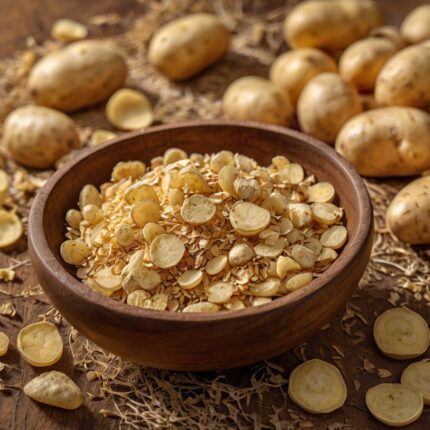Dried cress refers to the dried form of cress, a leafy plant from the Lepidium genus known for its peppery, mustard-like flavor. The most common types of cress include watercress (Nasturtium officinale) and garden cress (Lepidium sativum), both of which are nutrient-rich and recognized for their tangy, slightly bitter taste. Dried cress retains much of the flavor and health benefits of fresh cress but, due to its more concentrated nature, it is typically used in smaller quantities in recipes.
Key nutrients and health benefits:
-
-
-
Rich in vitamin K:
- Vitamin A: Essential for vision, skin health, and the immune system, dried celery is an excellent source of vitamin A, which helps protect against night blindness and supports eye health.
- Vitamin C: This powerful antioxidant helps boost the immune system, supports collagen production for healthy skin, and aids in the absorption of iron from plant-based sources.
- Vitamin K: Dried celery is an excellent source of vitamin K, which plays a key role in blood clotting and bone health, helping calcium bind to bones and teeth.
-
Rich in minerals:
- Calcium: Supports bone health, tooth development, and muscle function. Dried celery is an excellent calcium source for individuals who do not consume dairy products.
- Iron: This herb provides a good amount of iron, which is essential for oxygen transport in the blood and preventing iron-deficiency anemia.
- Magnesium and potassium: Both minerals help maintain healthy muscle and nerve function, regulate blood pressure, and support cardiovascular health.
-
Antioxidant power:
Dried celery contains high levels of antioxidants, which help neutralize free radicals in the body and protect cells from oxidative stress. This reduces the risk of chronic diseases such as cancer, heart disease, and diabetes. -
Digestive health:
Celery is rich in fiber, which supports digestive health by promoting regular bowel movements, improving gut health, and helping manage cholesterol levels.
The peppery flavor of celery can stimulate appetite and improve digestion, especially in individuals with slow digestion or bloating. -
Anti-inflammatory properties:
Dried celery contains compounds that help reduce inflammation in the body, making it beneficial for individuals with conditions such as arthritis, asthma, and other inflammatory diseases. -
Antimicrobial and antibacterial effects:
Glucosinolates in celery, along with its high vitamin C content, provide antimicrobial and antibacterial benefits that help support the immune system and prevent infections.
-
-
Culinary uses of dried celery:
Dried celery is typically used in small quantities due to its concentrated flavor. While fresh celery is more commonly used in salads and as a garnish, dried celery can be added to dishes to impart a bold flavor and nutritional benefits.
-
-
Salads and sandwiches:
- Salads: Dried celery can be added to salads, especially those featuring leafy greens, tomatoes, cucumbers, and avocados. It works well in salads based on arugula, rocket, and spinach.
- Sandwiches: Sprinkle dried celery onto sandwiches or rolls, especially those containing egg, avocado, cheese, or smoked salmon. It adds a peppery, mustard-like flavor.
-
Soups and stews:
- Vegetable soups: Dried celery can be added to vegetable soups, broths, or stews. Its flavor pairs well with soups containing potatoes, leeks, and peas.
- Spicy soups: The peppery flavor of dried celery makes it a good addition to spicy soups, such as lentil or tomato-based soups.
-
Meat and fish dishes:
- Meat dishes: Dried celery pairs well with meats, especially grilled meats like beef, lamb, and pork. It can be used in marinades or sprinkled on grilled meats to enhance the flavor.
- Fish: Celery complements fatty fish such as salmon, tuna, and other oily fish, whether used as a garnish or mixed into herb-based sauces.
-
Pesto and sauces:
- Spice blends: Dried celery can be combined with other herbs such as parsley, basil, and rosemary to create a unique blend. Use it to flavor olive oil or vinegar for dressings and garnishes.
- Pesto: Add dried celery to pesto sauce to create a spicy version of the traditional basil-based pesto.
-
Eggs and breakfast dishes:
- Egg dishes: Sprinkle dried celery on fried eggs, omelets, or frittatas to add a spicy, peppery flavor.
- Breakfast bowls: Add dried celery to avocado toast or grain bowls for extra flavor and nutrients.
-
| Nutrients | Amount per 100 grams: |
| Calories | 305 |
| portoin | 19g |
| fat | 7.3g |
| Saturated Fat | 1.1g |
| Carbohydrates | 44.7g |
| Dietary Fiber | 33 g |
| suger | 3.6g |
| vitamin A | 10,000 |
| C | 150 |
| K | 350 |
| Folate: | 180 |
| E | 4.3 mg |
| B6 | 0.2 mg |
| Calcium: | 1,000mg |
| iron | 9.5mg |
| Magnesium: | 270mg |
| Potassium: | 1,500mg |
| zinc | 3.4mg |
